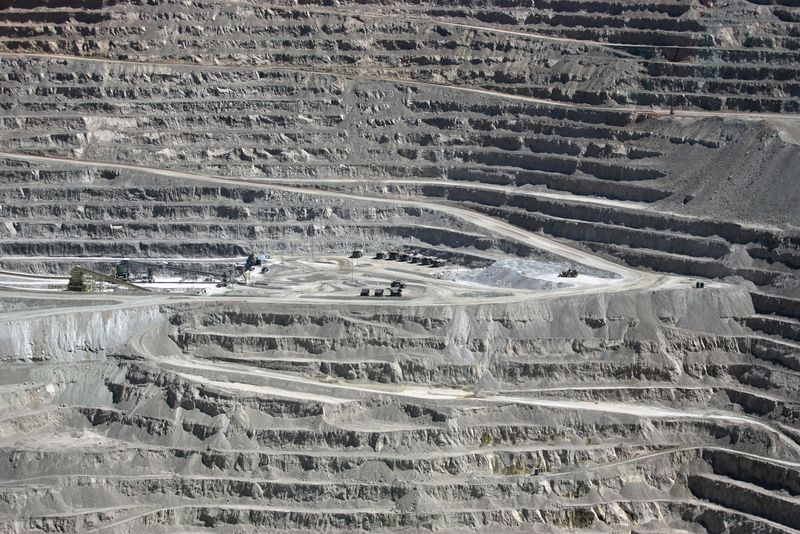
By Melanie Burton
MELBOURNE (Reuters) – BHP Group (NYSE:BHP) is likely to flesh out plans next week to spend at least $7 billion over the coming years to recover more metal from the world’s biggest copper mine, Escondida in Chile, investors and analysts said on Thursday.
The world’s biggest listed miner will be hosting analysts and investors on a roadshow of its Escondida and Spence copper operations from Nov. 17-20. BHP did not respond to a request for comment about the presentation.
Copper is key to BHP’s growth plans as an essential metal for the global transition to cleaner energy, but its annual production is set to fall by around 300,000 metric tons to 1.6 million tons by the end of the decade.
To keep output steady, BHP needs to show how it will extract more copper from diminishing ore grades at Escondida and justify higher spending, which it has estimated at between $7 billion and $12 billion over several years, according to UBS’ analysis of BHP figures.
“The cost to build everything is going up. That’s the reality,” said Andy Forster of Argo Investments.
Those costs include a new concentrator at Escondida which analysts estimate between $5 billion and $6.5 billion alone.
BHP has estimated capital spending including exploration in the current financial year at $10 billion, rising to $11 billion on average medium term. It is unclear how much of this Chilean spend is included in that existing capital spending outlook.
“BHP has made it very public that they are still quite positive on the long term fundamentals of copper. That does mean capex and that does mean that we will have to transition to a period of incentive pricing,” said RBC analyst Kaan Peker.
Peker sees copper prices trending up towards $5 a pound or higher. LME copper last traded at $8,966 a ton ($4 a pound).
There are four main ways to expand copper output in Chile: replacing the aging Los Colorados concentrator, debottlenecking its Laguna and Spence concentrators, and applying leaching technologies to unlock sulphide resources, BHP has said.
Buying Anglo American (JO:AGLJ) is “still BHP’s best near-term option for copper,” UBS said.
UK takeover laws prevent BHP from making another approach for Anglo until late this month, after it was rebuffed earlier this year.

“Anglo is making good progress with its restructuring and is expected to spin out Amplats after results in Mar/Apr-25. In our opinion, BHP (and others) are likely to re-evaluate Anglo after this,” UBS said.
BHP has not ruled out a renewed bid.
This post is originally published on INVESTING.




